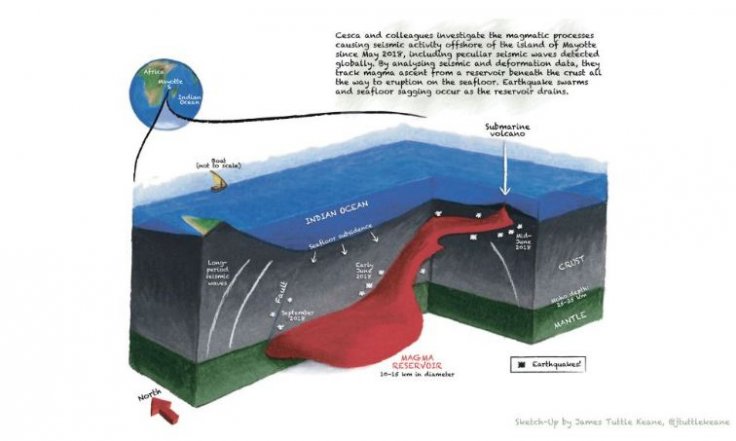A mysterious sound as a hum was detected all over the world by earthquake monitoring agencies, raising the tension for some time. As per the researchers, some of these signals had a duration of up to 20 minutes. These strange signals had triggered massive curiosity among the scientific community.
But a new study explained that what had caused the strange humming sound after recording an unusual number of earthquakes traced to the island of Mayotte located between Madagascar and Mozambique in the Indian Ocean.
The humming sound
The new study, published in the journal Nature Geoscience suggested that the signals appeared due to the formation of a new underwater volcano. Scientists have detected 7,000 tectonic earthquakes within the scope of the research. They stated that such earthquakes appear when tectonic plates become stuck as they move alongside one another and the pressure allows them to move on, triggering earthquakes.
The signals which are called Very Long Period signals are harmonic and low. As per the scientists, the earthquakes and signals were coming from about 22 miles off the eastern coast of Mayotte. It should be noted that the scientists could not find any signs of volcanic activities in the island area, they suspected the formation of a new volcano.

Scientists found an answer
As per the new study, researchers came to know what happened by using the new seismological methods. It should be noted that the first phase includes the rise of magma from a reservoir in the mantle 18 miles below earth's surface which opened a channel to the ocean floor and allowed the magma to flow while forming a new underwater volcano.
Later in 2019, an oceanographic campaign revealed that a volcano had formed in the same spot and during the formation of the volcano, not only the earthquake activity dropped, the ground of Mayotte was also lowered. After that, the VLP signals started.
Eleonora Rivalta, the study co-author from the German Research Center for Geosciences GFZ stated: "We interpret this as a sign of the collapse of the deep magma chamber off the coast of Mayotte," while adding that it is the largest and deepest "magma reservoir in the upper mantle to date, which is beginning to empty abruptly."

The volcanic island
It should be mentioned that even though in 2018 when a multitude of seismic signals appeared, it made scientists curious as well as puzzled since it was hardly noticeable on the island itself which is one of four volcanic islands in the archipelago. As per the study, Mayotte is the home to about 260,000 people and the last eruption on this island took place almost 4,000 years ago.
The co-author of the new study Torsten Dahm, who is also a professor of geophysics and seismology at the University of Potsdam in Germany stated that since the seabed lies three kilometres below the ocean surface, hardly anyone noticed the enormous eruption.
"However, there are still possible hazards for the island of Mayotte today, as the Earth's crust above the deep reservoir could continue to collapse, triggering stronger earthquakes," Prof Dahm added.









